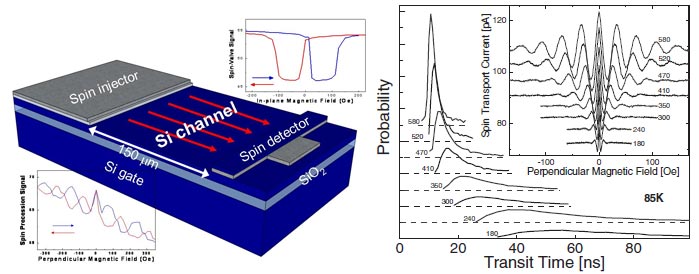Contributor: Ian Appelbaum

Semiconductors serve as the conduits for electron transport in nearly all modern logic, sensor, and optoelectronic devices, because these materials enable precise manipulation of internal electric fields that control the electron's fundamental electric charge. Consider the scenario that an additional "spin" degree of freedom (an intrinsic angular momentum coupled to a magnetic moment) is introduced to establish a local spin imbalance. Can we use our understanding of semiconductor crystal symmetry and its impact on the properties of electron states (spin-dependent "bandstructure") to predict potentially advantageous or deleterious phenomena in a given semiconductor material? Going further, can we intelligently select or design new materials for spin-polarized electron transport? Appelbaum's group has continued to develop extensive experimental capabilities to address these fundamental questions since arriving at University of Maryland in 2008.
Discovery of previously unknown mechanisms for spin relaxation, dephasing and interaction with interfaces and impurities in the technologically important semiconductors silicon and germanium. Theoretical analysis of the spin consequences of symmetry on potential applications in 2-D materials such as graphene and phosphorene were also investigated.
A fundamental understanding of localized spin imbalance in semiconductors over different length- or time-scales can potentially impact materials selection and design.